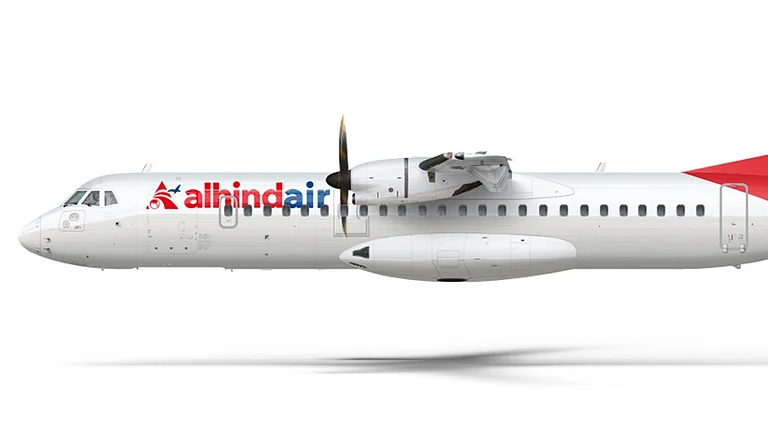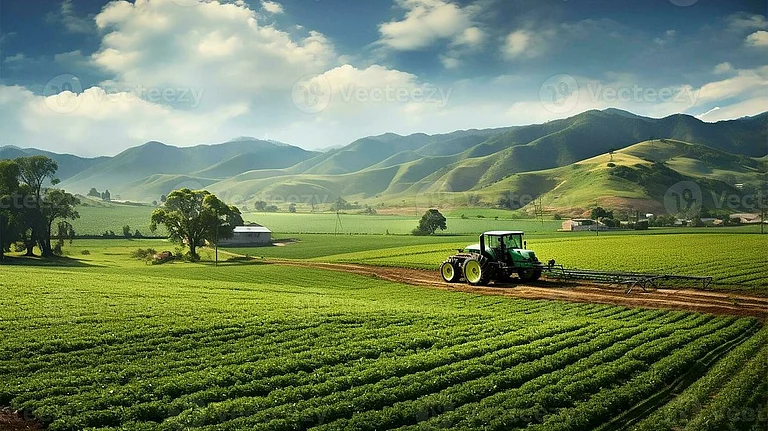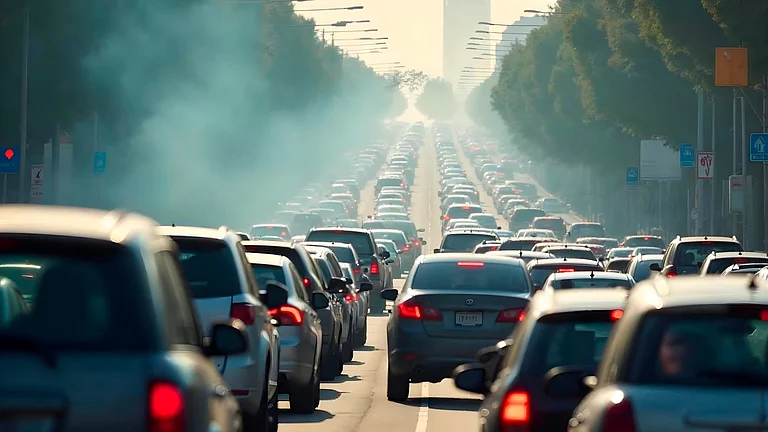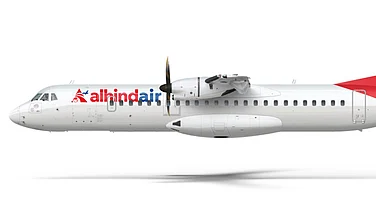Ankita Fernandes, who runs Francis Fernandes’ family-owned Fresh Catch in Mumbai, is fuming. And it is not because of the sultry summer’s harsh blow. Prices of commercial LPG cylinders were increased by Rs 102 to touch Rs 2355.50 on 1st May, and she is not amused.
"We have used commercial LPG cylinders for over 25 years, and the biggest rate change is the hike in its prices," Ankita complained. "10 years ago, the rate was around Rs 1100 to Rs 1200. During the pandemic, this multiplied almost five times over. The cost per cylinder was around Rs 2200 a couple of weeks ago, and now it has overshot the obnoxiously high rate of Rs 2307!"
Dr. R Ravichandar, CMD of Nandhana Group which runs a chain of 15 multi-cuisine casual dining establishments in Bengaluru and Chennai, has kept a close eye on the northward climb of LPG cylinder price. Rattling off the figures, he said, "The overall increase in LPG prices has been 70 per cent from 2020 to 2022. Cylinder prices have increased by 40 per cent between 2020 to 2021 and 30 per cent between 2021 to 2022."
Debaditya Chaudhary - MD of Chowman, Oudh 1590, and Chapter 2 - is also worried about these rapid hikes in LPG and CNG piped gas prices over the past two months. He claimed that it has drastically affected food costs.
"Since Chowman has stood by its promise of selling food at an affordable price, the price change has incurred a big blow to our unaltered menu rates. The fuel rates must come down, otherwise, it can be difficult for us to continue business at such low pocket-friendly prices," he rued.
Uncle's Kitchen, a popular Chinese food restaurant in Mumbai's suburbs, has been operating since 1987. However, its owner, Ronnie D'Souza, does not remember seeing such escalating fuel costs over the past three decades.
"We have a piped gas connection, and the increase in fuel prices has been phenomenal since the pandemic began. Worse is that there has never been a rollback ever," he lamented.
A bitter taste
Restaurants were the worst affected during the pandemic, as strict lockdowns brought their business to a grinding halt. With fewer dine-in customers, many pivoted to a delivery-only model to survive.
With the easing of lockdowns, restaurateurs were eagerly looking forward to recouping lost business, but the fuel price hike has thrown yet another hurdle to recovery. Talking about this, Mihir Desai - Founder of Corum Hospitality (which has brands like The Bar Stock Exchange, The Big Bang Bar and Café, Soi Kitchen and Masala Zone), said, "There is an average 30 per cent increase in LPG prices every year. Moreover, the GST on gas prices is an additional burden."
Since he would rather not increase menu prices by a corresponding percentage, the company accommodates some losses and passes a little to the consumer. "Following rising fuel prices, overall inflation has also hit the roof resulting in skyrocketing costs of produce and commodities. We have increased the pricing a bit but not passed on the entire burden to the consumer as we don't want the footfall to go down and become unaffordable for the consumers," he explained.
Retail inflation in India surged to 7.79 per cent on an annual basis in April, owing to higher edible oil and fuel prices, as per data shared by the Ministry of Statistics and Programme Implementation on 12th May. The headline inflation is now at the highest level since the 8.33 per cent hit in May 2014.
Due to this inflation, restaurant operational costs have gone up, resulting in higher costs of finished products and a decrease in gross and net operating profit. Pankaj Barot, who runs Revival restaurant in Mumbai, stated that the high input cost of food as raw material, followed by salaries, fuel including electricity and LPG gas cylinders, form the third-highest input cost in the food and beverage (F&B) industry. "A 1 per cent rise in any of these items causes a cascading effect on our profit. Food inflation, workforce shortage, rising wage bills and fuel cost increases have eaten into our recapitulating margins, quite adversely after the two years of unprecedented lockdown vagaries. Since our menu prices cannot be increased due to prevailing competition, our bottom lines take the beating!" he lamented.
Various restaurants are dealing with these challenges differently. To combat the price rise in commodities, Nandhana Group pays close attention to inventory data to ensure better accuracy and reduce wastage. "We are establishing a repeatable end to end actionable visibility of spending by cost category, reducing consumption to optimum and minimizing our menu," added Dr Ravichandar.
Since it is a seafood restaurant, Fresh Catch has thin margins. This is largely because produce, like fresh fish, is expensive, and there are various supply and demand aspects, including quality of fish and season of breeding, etc.
"The rates are also as per catch, and this makes pricing extremely crucial for seafood restaurants. We have tried to absorb the gas price hike as people have just started stepping out to restaurants and will opt for more affordable restaurants. They are relatively more money-conscious than they were before the pandemic. And for a good reason!" Ankita said.
Since Fresh Catch restarted its operations just a month ago, there are no plans to increase menu prices, especially given the market's competitive nature. Instead, the siblings running the establishment are doing their best to reduce other outgoing expenses so that their profits are not eaten up.
The balancing act
Parvez Khan, Head Chef and Co-Founder, Wakai managed the hike into the balance sheet, while the rise was gradual. Things came to a head when LPG prices spiked drastically over the past couple of months. This, according to him, disturbed the equilibrium that most restaurateurs had somehow managed to achieve. "All restaurants revise their menus on a half-yearly or annual basis, including price review and revamping of dishes. The menu prices cannot keep fluctuating with the changes in the market as it becomes difficult to justify this to guests," he explained.
Ishaan Bahl, Founder of 145 Mumbai, too does not intend to raise the prices of this all-day casual resto-bar at Kamala Mills, which has several F&B brands within a radius of a kilometre. While admitting this is not an ideal situation to be in as a restaurateur, he added that one could not keep changing the pricing as it is unfair to customers. "At this time, we want our customers to have the best possible experience with us. We will try to work out the price hike issues on the backend and try not to make any changes on the front end," he added. This is often a euphemism for saying this is the best way to retain customers at a time when brand loyalty is heavily reliant on how expensive an outing is on the wallet.
Why Isn’t Help Forthcoming?
The other big challenge staring at F&B establishments is the lack of manpower. According to Mihir, following massive layoffs during the pandemic, the industry is eyeballing a scarcity of 25 per cent skilled staff. Ishaan agreed with him. "Manpower shortage is currently our industry's most pressing issue. Workers moved away from restaurants and hotels to other options because the hospitality industry was severely impacted during both COVID waves," he said, adding that getting good people is now a massive task.
The industry has been pinning hopes on the government to give it a respite from the double whammy of inflation and rising fuel prices. The Federation of Hotel & Restaurant Associations of India (FHRAI) had recently made a representation to the GST Council, suggesting a reduction in GST on LPG used in hotels and restaurants from 18 per cent to 5 per cent.
The trade body said that this move would bring down operational costs, which would benefit customers. Moreover, it has sought either the removal of GST on rent payments or permission for input credit on rent payments to cushion the blow of the rising inflation.
Mihir hoped that authorities would give the sector waivers in power tariff, property tax, license fees, and various compliance fees applicable to running a restaurant. He expected the central government to support our industry by allowing GST input credit on the lines of what is permitted to other sectors currently.
"The government should develop a portal acting as an aggregator between restauranteur and staff so the needy can get a job and we get talent," he added. "This will bring down unemployment figures overall since ours is a manpower-intensive industry."
Ronnie, too, said that the sector has been hoping for a lifeline from the authorities since the pandemic began. "We hoped they would revise the taxes and licence fees in addition to offering subsidies in electricity and gas to our industry. That is the least they can do," he opined.
A little consideration and support are all Pervez expects from the administration. "Restaurants are in a spot where they cannot randomly spike the rates to bridge the cost differences. It certainly defies one of the main reasons for our existence, and that's hospitality," he stated.
Pankaj noted that businesses globally received various relief packages from their respective governments during the pandemic, but Indian organizations were not as fortunate. "Excise duty sops are at the argument levels at various forums, but we have been pleading for infrastructure status with the central government for ages and rationalization of GST rates," he said. This will make the business more viable and help the industry overcome the crisis of the past two years.






























